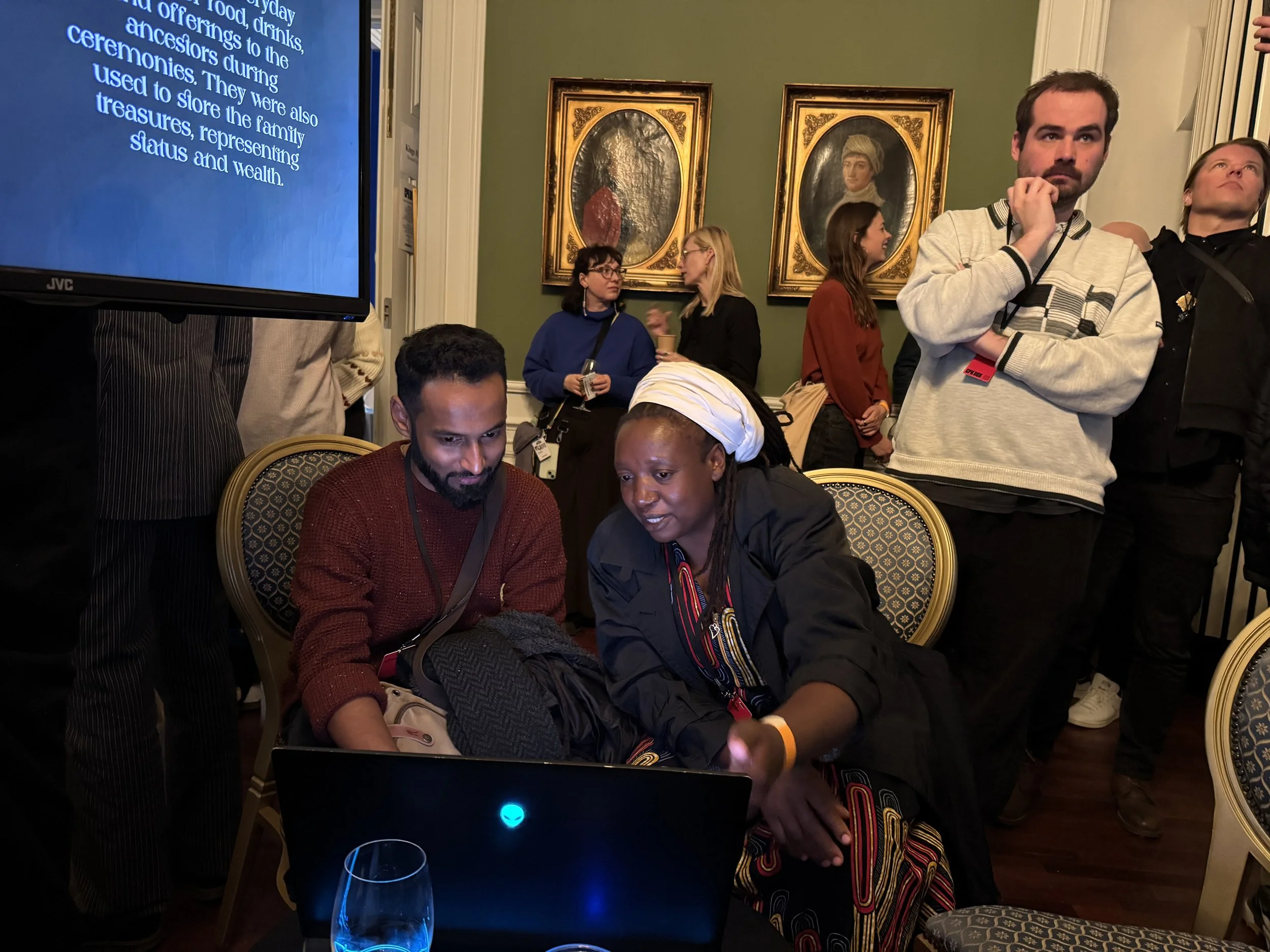Futuristic Pagan: Bridal Homecoming
Tigashire! Welcome,
To the last great Shona empire,
A kingdom of gold,
Where family unions birth future generations.
Today we celebrate a joyous occasion,
Kuperekwa, the Bridal Ceremony.
Images: carved stone bird sculptures found at Great Zimbabwe ruins (3D model)
These sculptures most likely representing the mutupo (totems) of the King, depicting links between earth and sky, man and his origins.
Introducing Futuristic Pagan: Bridal Homecoming
A mystical VR journey into a traditional Zimbabwean ceremony,
set in the historic Rozvi Empire
Image: Great Zimbabwe, a Rozvi capital
Through VR you are immersed in the Shona Bridal ceremony - Kuperekwa.
As Muzukuru, you enact the rituals, offering gifts and welcomes. From the gates of the Royal Court to the Bridal Feast, each interaction unveils the wealth of Shona heritage.
Through immersive storytelling, this project preserves cultural memory, challenges colonial erasure, and creates a space for generative and prosperous African futures.
Futuristic Pagan: Bridal Homecoming transports you to Great Zimbabwe, one of the most recognisable icons of our country. It is an ancient, mystical stone city, where towering walls and sacred ruins whisper the secrets of lost kingdoms. The experience takes you deeper, beyond the ruins. Before modern-day Zimbabwe, before it was colonised under Rhodesia, to the last great Shona kingdom, the Rozvi Empire, led by the ruling Moyo totem lineage.
Image: Bride wearing stacked gold jewellery, a symbol of royal status
Lead Artists
Chipo Mapondera is a Creative Technologist whose multidisciplinary immersive work connects the tangible and intangible cultures of her native Zimbabwe, and beyond. Winning an Innovate UK Award and nominations for AIXR and STARTS Africa awards. Exhibited internationally at National Gallery of Zimbabwe, Fakugesi, and Hypha Studios, Chipo has presented at the Leverhulme Centre (CFI) and Sussex Digital Humanities Lab, and is selected for CPH:LAB 2024/25.
Sabina Mutsvati is a Zimbabwean fine artist, fashion and costume designer whose work powerfully fuses tradition and innovation. With a background in fine art and applied design from Harare Polytechnic College, she has developed a distinctive creative voice rooted in cultural storytelling, environmental awareness, and experimental form. Her multidisciplinary practice moves fluidly across fashion design, costume for performance, and immersive installations.
Collaborators
3D modelling and Content Creation: Joel Chandauka
Sound Design: Shumba Maasai
This project was developed as part of the CPH:LAB, the talent development program of CPH:DOX that “encourages creative risk taking, celebrates raw talent, facilitates collaboration across borders and business sectors and supports visionaries to push the existing boundaries of documentary filmmaking.”
Images below (L-R):
Sabina Mutsvati at the CPH:LAB showcase at CPH:DOX 2025 (Adam Cernich)
Sabina Mutsvati and Chipo Mapondera present at the CPH:LAB showcase at CPH:DOX 2025 (Joakim Züger)
Visitor experiencing the Bridal Homecoming VR experience at CPH:LAB showcase at CPH:DOX 2025 (Adam Cernich)



A ceremony in virtual reality
Video: Walkthrough of the prototype, Introducing Bridal Homecoming
Experience Introducing Bridal Homecoming, our VR prototype offering a first glimpse into the full immersive journey. Meet Tete, your ceremonial guide, as she leads you through the ancestral rituals of a traditional Shona bridal ceremony, Kuperekwa. The full experience unfolds across four levels, guiding the Vaperekedzi, the Bridal Party, from the gates of the Royal Court to the culminating Bridal Feast. Through interactive VR, you’ll take part in ritual offerings, witness the unveiling of Muroora, the Bride, and engage with rich ceremonial traditions.
This project reclaims African heritage through immersive storytelling, preserving ancestral knowledge, challenging colonial narratives, and creating space for culturally resonant, digital archives for the future.
Sharing the Journey
We are actively showcasing this prototype and gaining meaningful insights from audiences, sparking connection, reflection, and inspiration. Most recently, Introducing Bridal Homecoming has featured at the 1925 Glen Norah Africa Day presentation at the National Gallery of Zimbabwe, and the Matamba Immersiv Showcase during the 2025 EU Film Festival Zimbabwe at Mbare Art Space, Harare.
Matamba Immersiv Showcase visitors at the 2025 EU Film Festival Zimbabwe at Mbare Art Space
Symbols of the Rozvi Empire
ALBATROSS BUTTERFLY
Scientific name: Appias
Typically seen in forests, savannas, and woodlands across Zimbabwe, and at Great Zimbabwe, which was historically surrounded by natural landscapes.
URUNGWE COPPER INGOTS
Most copper was mined in Urungwe. These cross-shaped ingots were used as a form of money, and traded all through Central Africa.
MAZIMBABWE
Mazimbabwe, or “great stone structures”, inspired the country’s name, and symbolised power. Stacked stone walls, built without mortar are seen at Great Zimbabwe, Dangangombe, Nalatale and Khami.
HARI
Clay pots are everyday utensils for food, drinks, and offerings to the ancestors during ceremonies. They were also used to store the family treasures, representing status and wealth.
GOLD
Gold jewellery and Rozvi pottery was found at sites such as Danangombe. Mined by villagers, foreign gold trade brought luxuries of rich cloths, beads and China to the ruling class.




